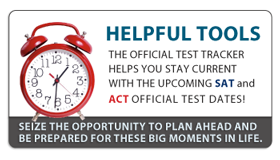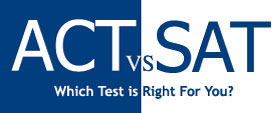 CHYTEN’S MAGNOSTIC™ DIAGNOSTIC CHYTEN’S MAGNOSTIC™ DIAGNOSTIC
A REVOLUTION IN TEST-TAKING ANALYTICS
Chyten’s Magnostic Diagnostic identifies student tendencies in more than 100 reading, writing and mathematical categories. It then goes further to measure the immeasurable: test-taking behavioral analytics. With its detailed graphical analysis, Chyten’s Magnostic Diagnostic provides both visual and linear representations of performance that can easily be turned into a plan of action to improve scores and confidence. Chyten’s Magnostic Diagnostic that accompanies the ACT vs. SAT Comparison Test provides comparative data for the two exams and a recommendation of which test best fits each student’s learning profile.
 ACT VS. SAT TESTING ACT VS. SAT TESTING
ACT VS. SAT: WHICH TEST IS BEST?
With ACT gaining a foothold in the Eastern and Western United States, and with every college in America now accepting ACT as readily as they accept SAT, many students are left wondering which test to take – which test matches their academic abilities. In general, ACT favours faster readers and literal thinkers, while SAT favours analytical thinkers.
The best way to measure relative ability is for a student to take both tests. However, taking both tests is not a realistic option, because students are already pressed for time and heading straight for test burnout. Chyten has developed a single diagnostic tool that can predict a student’s relative performance on ACT and SAT.
CHYTEN'S ACT VS. SAT COMPARISON TEST
Chyten’s ACT vs. SAT Comparison Test was created using a proprietary algorithm that compresses both the ACT and the SAT into a single test, while suffering no diminution of accuracy on either. It is accompanied by a report that provides performance detail on every type of ACT and SAT question, information on overall performance and a recommendation of which test you should take. Taking Chyten’s ACT vs. SAT Comparison Test can save you countless hours and thousands of dollars preparing for an exam that may not suit your unique learning style.
Click here to see our testing calendar.
ACT AND SAT PRACTICE TESTS - CHYTEN "ACTUAL CONDITIONS"
ACT and SAT Practice Tests Practice makes perfect, especially under real conditions. At Chyten, we offer tests administered in a real classroom under actual test conditions. With our "Actual Conditions” tests, Chyten provides students with the opportunity to feel what it is like to take a real test. Check your local Chyten Education Center's calendar for a list of test dates in your area. Or call and speak to your local Chyten Education Center director.
Actual Conditions Tests include:
- PSAT with Chyten’s Magnostic Diagnostic
- SAT with Chyten’s Magnostic Diagnostic
- ACT with Chyten’s Magnostic Diagnostic
- ACT vs. SAT Comparison Test with Chyten’s Magnostic Diagnostic
UNDERSTANDING COLLEGE STANDARDIZED TESTING
High School Students – Grades 10th – 12th
PRECURSER
PSAT and PLAN Tests
Sophomores – students should always consider taking the PSAT (Preliminary SAT offered by the College Board) and PLAN (Pre- ACT - offered by the ACT Company) during their 10th grade.
Juniors - all students take the PSAT in the fall of the junior year.
Taking the test as a junior will qualify you for National Merit Scholarships and it helps identify you to colleges as a potential applicant. Reviewing results of PLAN and PSAT tests will help you to prepare for the SAT and ACT exams. The results of these tests are not reported to colleges. They are for your benefit only.
|
|
SAT
|
ACT
|
|
When is it administered?
|
Seven times per year
|
Six times per year
|
|
What is the test structure?
|
Ten-section exam: Three Critical Reading, three Math, three Writing, and one Experimental. The Experimental section is masked to look like a regular section.
|
Four-section exam: English, Math, Reading, and Science Reasoning. An Experimental section is added to tests on certain dates only, and is clearly experimental.
|
|
What is the test content?
|
Math: up to 9th grade basic geometry and Algebra II. Science: none. Reading: sentence completions, short and long critical reading passages, reading comprehension. Writing: an essay, and questions testing grammar, usage, and word choice.
|
Math: up to trigonometry. Science: charts, experiments. Reading: four passages, one each of Prose Fiction, Social Science, Humanities, and Natural Science. English: stresses grammar.
|
|
Is there a penalty for wrong answers?
|
Yes ¼ point off for incorrect answers
|
No
|
|
How is the test scored?
|
200-800 per section, added together for a combined score. A 2400 is the highest possible combined score.
|
1-36 for each subject, averaged for a composite score. A 36 is the highest possible composite score.
|
|
Are all scores sent to schools?
|
Yes. If a student requests a score report be sent to specific colleges, the report will include the scores the student received on every SAT taken.
|
No. There is a "Score Choice" option. Students can choose which schools will receive their scores AND which scores the schools will see.
|
|
Are there other uses for the exams?
|
Scholarship purposes. Some colleges may use scores for placement
|
Scholarship purposes. Certain statewide testing programs. Some colleges use scores for placement
|
|
Best time to register?
|
At least six weeks before the test date The earlier the better
|
At least six weeks before the test date The earlier the better
|
|
How to contact?
|
Educational Testing Service (ETS) www.ets.org The College Board www.collegeboard.com
|
ACT, Inc. www.ACT.org
|
|




 CHYTEN’S MAGNOSTIC™ DIAGNOSTIC
CHYTEN’S MAGNOSTIC™ DIAGNOSTIC